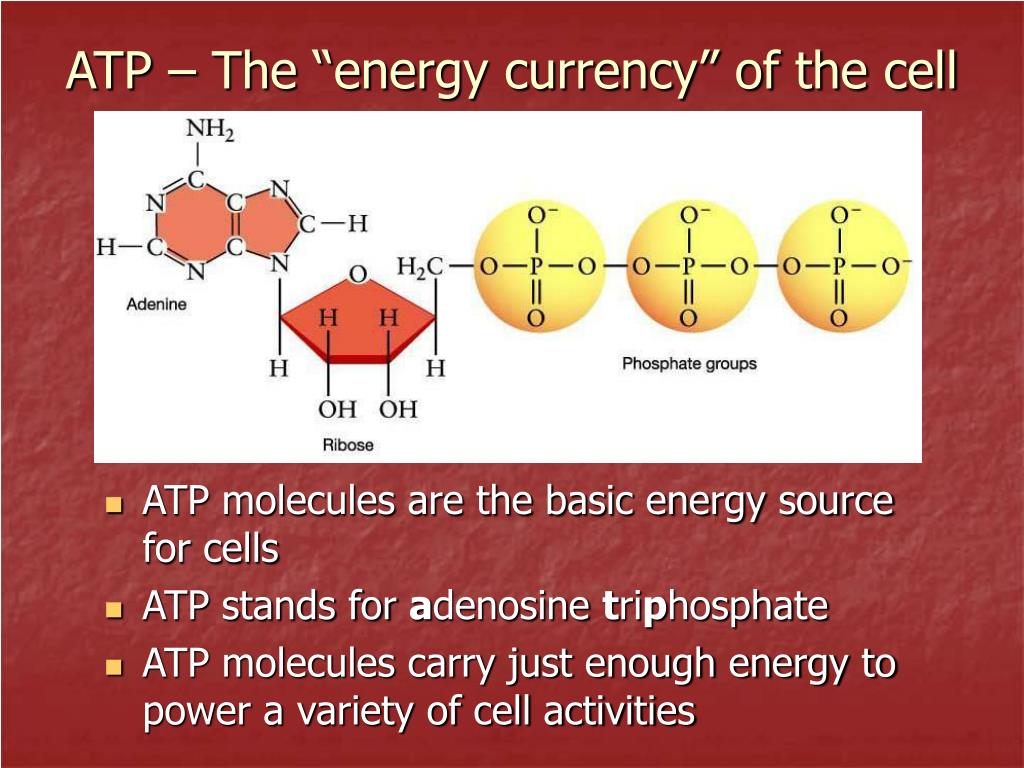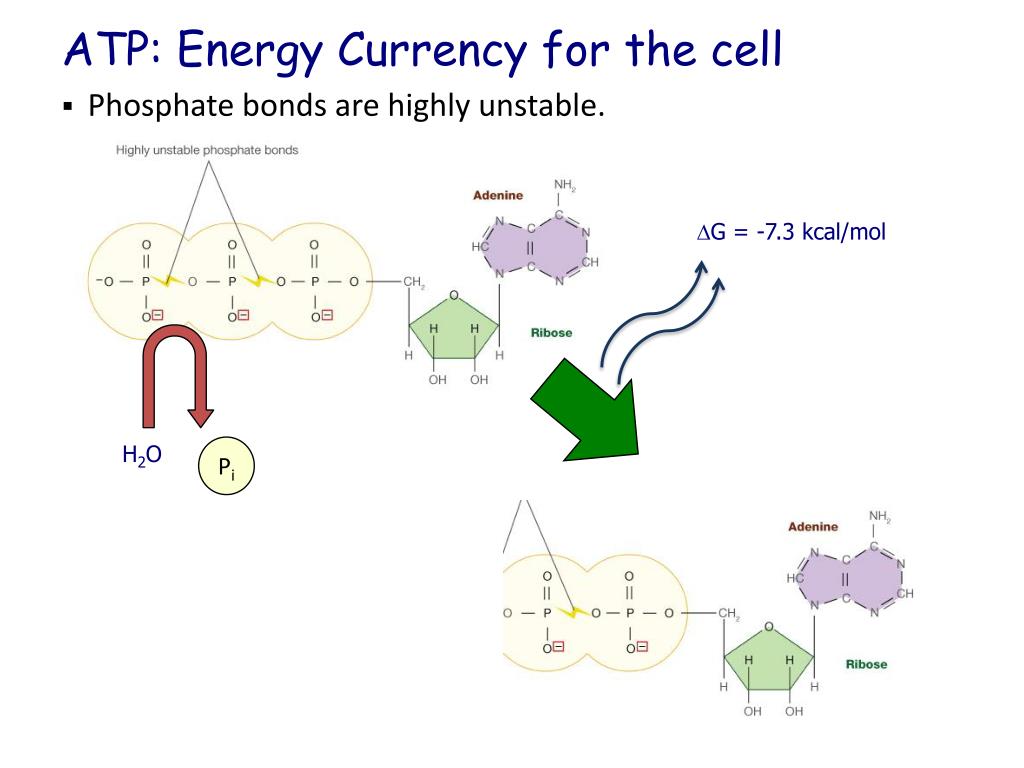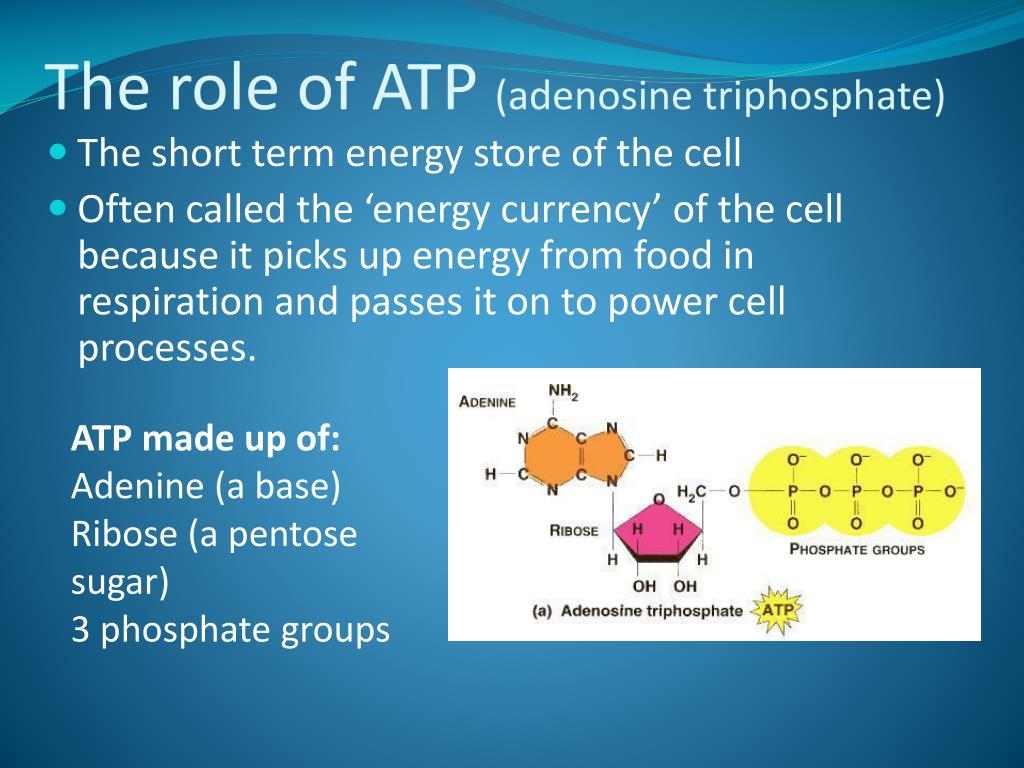Atp Is Called The Energy Currency Of The Cell Because

Cellular processes grind to a halt without it: ATP, the energy currency powering life as we know it, is under renewed scrutiny as researchers delve deeper into its multifaceted role within the cell.
This vital molecule fuels everything from muscle contraction to protein synthesis, acting as the immediate energy source for countless biochemical reactions. Understanding ATP's function is paramount to unraveling the complexities of cellular biology and developing new treatments for energy-related diseases.
The Universal Energy Donor
ATP, or adenosine triphosphate, isn't just energy; it's the primary energy currency utilized by all known life forms. It’s essentially a molecular unit readily available to power cellular operations.
The "currency" analogy stems from its role as the immediate supplier of energy, directly powering countless enzymatic reactions within the cell.
Breaking the Bonds: Releasing Energy
ATP's energy lies within the high-energy phosphate bonds. When one of these phosphate groups is cleaved off through hydrolysis, energy is released, driving cellular work.
This process forms ADP (adenosine diphosphate) or AMP (adenosine monophosphate), depending on how many phosphates are removed. These products can be recycled back into ATP.
The cell then rapidly converts ADP and AMP back to ATP using energy derived from food through cellular respiration.
Where Does ATP Originate?
Cellular respiration, taking place primarily in the mitochondria of eukaryotic cells, is the main source of ATP. This intricate process breaks down glucose and other organic molecules, releasing energy that is then harnessed to regenerate ATP.
Glycolysis, occurring in the cytoplasm, produces a small amount of ATP, in addition to pyruvate, which then enters the mitochondria.
Photosynthesis in plants also generates ATP during the light-dependent reactions, using sunlight's energy.
A Multifaceted Role: Beyond Direct Energy Supply
ATP's role extends beyond being a direct energy source. It also acts as a signaling molecule, participating in various cellular communication pathways.
ATP can bind to specific receptors on the cell surface, triggering downstream signaling cascades. This involvement in cell signaling is crucial for regulating cell growth, differentiation, and programmed cell death (apoptosis).
Furthermore, ATP is a building block of RNA. When ATP loses its phosphate group, it can become a monomer to build RNA.
Specific Examples of ATP Usage
Muscle contraction: ATP powers the interaction between actin and myosin filaments, enabling muscles to contract and generate force. Without ATP, muscles would remain locked in a contracted state.
Active transport: ATP fuels the movement of molecules across cell membranes against their concentration gradients. This is essential for maintaining proper ion concentrations and nutrient uptake.
Protein synthesis: Ribosomes require ATP to assemble amino acids into proteins, essential for cell function and structure.
Disruptions in ATP Production and Disease
Dysfunctional ATP production is implicated in numerous diseases, highlighting its critical importance for health. Mitochondrial disorders, for example, directly impair ATP synthesis, leading to a range of debilitating symptoms.
Heart failure, neurodegenerative diseases (such as Parkinson's and Alzheimer's), and cancer are all linked to disruptions in ATP metabolism. The efficiency of the electron transport chain in the mitochondria is drastically affected.
Understanding the complexities of these disruptions is a key focus in developing targeted therapies for these conditions.
Current Research and Future Directions
Researchers are actively exploring new strategies to enhance ATP production and delivery to cells, particularly in the context of disease. This includes developing drugs that boost mitochondrial function and exploring methods to directly deliver ATP to affected tissues.
Moreover, scientists are investigating the potential of targeting ATP-dependent pathways in cancer cells to disrupt their energy supply and inhibit their growth. New ATP analog inhibitors are being discovered.
The ongoing exploration of ATP's role within the cell promises to unlock new insights into the fundamental processes of life and offer hope for treating a wide range of diseases. ATP analog inhibitors are showing potential for treating many diseases.


















